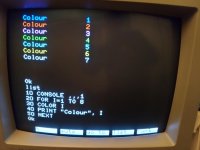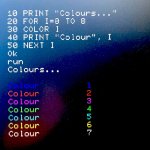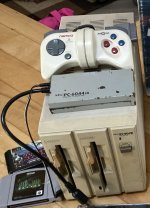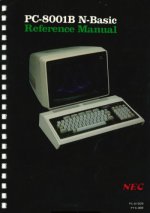The color sockets were quite odd. These socket has:
V sync = 60Hz negative going pulses (16.7ms between pulses, TTL levels, 0V to 4.1V)
H sync = 15.75kHz negative going pulses (63us between pulses, TTL levels, 0V to 4.1V)
Color clock = 14.3MHz (ie 4 times the NTSC 3.579545MHz color carrier), positive going pulses (70ns between pulses, from -2V to +8V)
RGB = waveform going from -8V to +16V (24V p-p)
As the power on screen is mostly blank the RGB signals are long periods of 0V with short bursts of signal. Not sure why the voltage goes over such a large range, maybe it is designed for some sort of terminating network (eg a 1kohm resistor in series feeding a 100 ohm resistor to ground would give 2V p-p, or a 150 ohm resistor in series feeding a 75ohm input)?
<cut>
I would be wary of connecting the color output straight into a prized multisync monitor without checking it out first.













